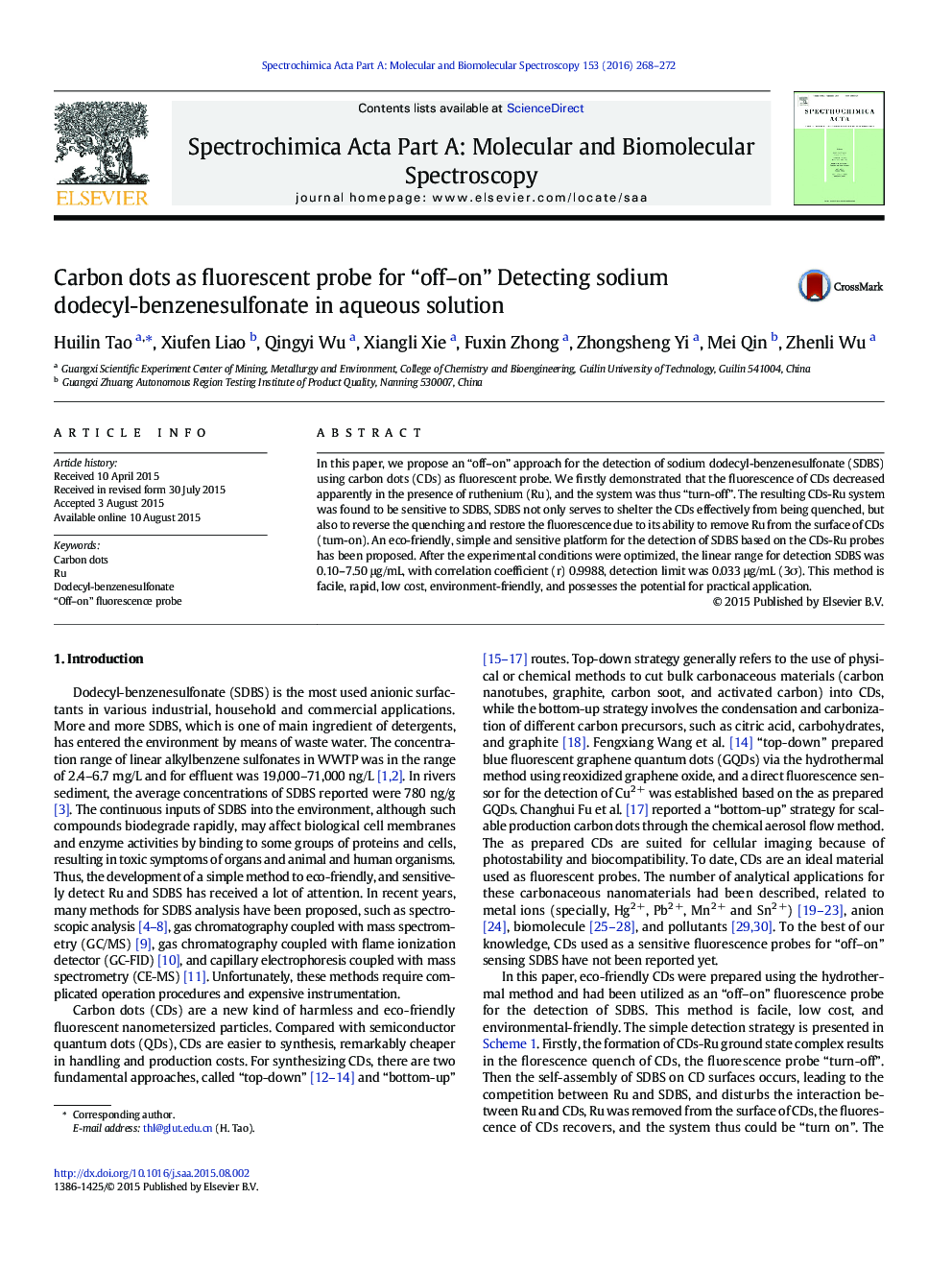| Article ID | Journal | Published Year | Pages | File Type |
|---|---|---|---|---|
| 1228726 | Spectrochimica Acta Part A: Molecular and Biomolecular Spectroscopy | 2016 | 5 Pages |
•Eco- friendly and high fluorescence quantum yield CDs was served as an “off-on” fluorescence probe for detection SDBS.•The as-prepared CDs was characterized, and the mechanism for “off-on” detection SDBS was discussed.
In this paper, we propose an “off–on” approach for the detection of sodium dodecyl-benzenesulfonate (SDBS) using carbon dots (CDs) as fluorescent probe. We firstly demonstrated that the fluorescence of CDs decreased apparently in the presence of ruthenium (Ru), and the system was thus “turn-off”. The resulting CDs-Ru system was found to be sensitive to SDBS, SDBS not only serves to shelter the CDs effectively from being quenched, but also to reverse the quenching and restore the fluorescence due to its ability to remove Ru from the surface of CDs (turn-on). An eco-friendly, simple and sensitive platform for the detection of SDBS based on the CDs-Ru probes has been proposed. After the experimental conditions were optimized, the linear range for detection SDBS was 0.10–7.50 μg/mL, with correlation coefficient (r) 0.9988, detection limit was 0.033 μg/mL (3σ). This method is facile, rapid, low cost, environment-friendly, and possesses the potential for practical application.
Graphical abstractScheme 1. Schematic illustration for the “off–on” detection of Ru and SDBS by CDs fluorescence probe.Figure optionsDownload full-size imageDownload as PowerPoint slide
